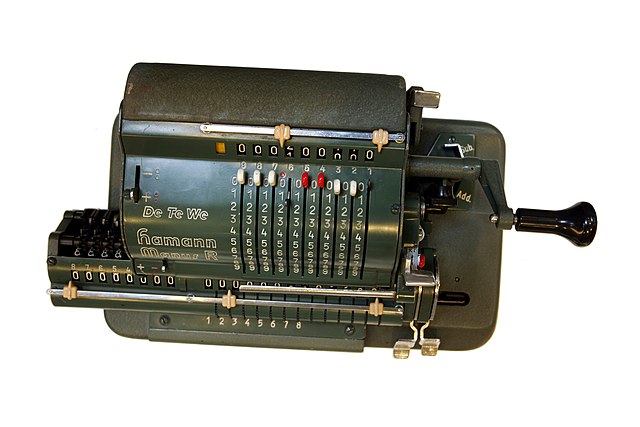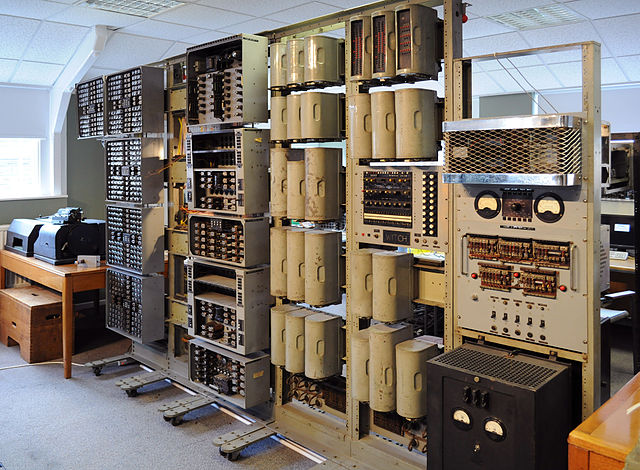The ball-and-disk integrator is a key component of many advanced mechanical computers. Through simple mechanical means, it performs continual integration of the value of an input. Typical uses were the measurement of area or volume of material in industrial settings, range-keeping systems on ships, and tachometric bombsights. The addition of the torque amplifier by Vannevar Bush led to the differential analysers of the 1930s and 1940s.
A number of ball-and-disk integrators were used on Lord Kelvin's tidal calculators. The cylindrical output shaft, ball and input disk are clearly visible. The ratio is changed by moving the balls to the left or right along the rack, seen at the top.
A mechanical computer is a computer built from mechanical components such as levers and gears rather than electronic components. The most common examples are adding machines and mechanical counters, which use the turning of gears to increment output displays. More complex examples could carry out multiplication and division—Friden used a moving head which paused at each column—and even differential analysis. One model, the Ascota 170 accounting machine sold in the 1960s, calculated square roots.
Hamman Manus R mechanical computer, produced in Germany by the DeTeWe company between 1953 and 1959
Curta Calculator
Harwell Dekatron




